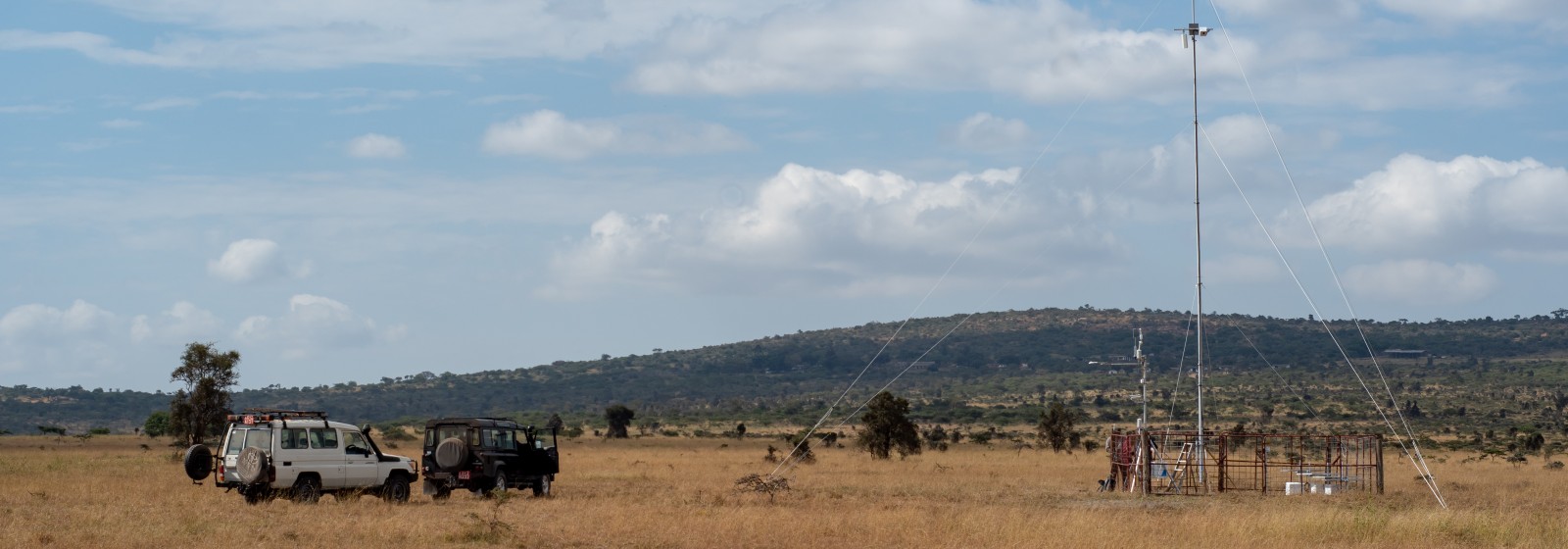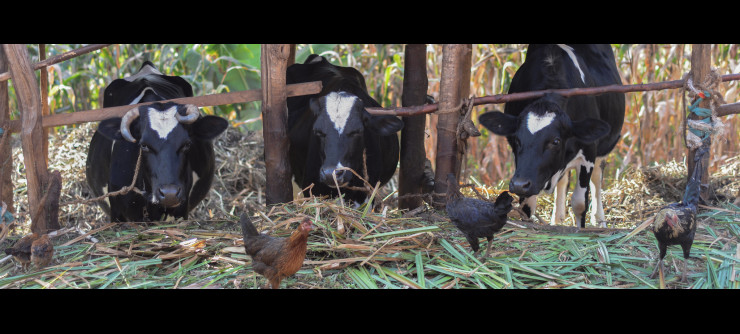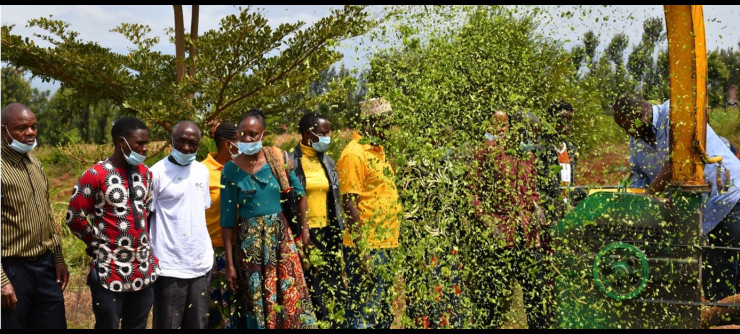The overall goal of the Livestock and Environment flagship is to reduce the environmental footprint of livestock production across both rapid and fragile growth trajectories, while ensuring that livestock systems in developing countries are able to adapt to global environmental changes.
The flagship has a key role because it is the only one devoted to avoiding the unintended consequences of improving livestock productivity. It ensures that technology-generating flagships avoid this and that solutions consider future climate change. Thus far, much research has been focused on advancing strategies for a more sustainable livestock sector in developed countries, while this has been mostly ignored or only just emerging in many developing countries.
To maximize the synergies between livestock and the environment, the environmental footprint of livestock has to be reduced by increasing resource-use efficiency. In intensive systems, combining improved technologies with efficient value chains can reduce GHG emissions per unit of animal-source food. In extensive systems, improving rangeland and sown pasture management to increase yields, accumulate carbon and improve soil–water productivity is another win–win. The flagship will initially focus on GHG emissions and land degradation; and later on interventions for sustainable water use and enhancing biodiversity.
Widespread adoption of environmental management of livestock requires appropriate governance mechanisms and significant investment, by local actors, national governments and the private sector. Environmental issues and livestock are moving up global and regional donor and political agendas, a trend that may open up new finance streams but also requires accurate evidence on a range of livestock and environmental aspects.
The flagship brings a specific focus on small-scale production systems, with on-site capacities to assess environmental footprints and develop strategies that marry socially inclusive and equitable productivity and livelihood improvements with improved environmental performance.
The flagship is:
- Identifying solutions to environmental management challenges and providing diverse stakeholders, including women and young people, with the knowledge and incentives to change their behavior and implement the solutions.
- Providing foresight as to how environmental footprints are likely to evolve and feed information back into decision-making processes so as to avoid negative environmental outcomes.
- Fostering an enabling policy and institutional environment for the environmental management of livestock production, through research and engagement with key decision-makers.
The program will place increased attention to interactions between livestock production and the environment, following on from activities initiated under the Livestock and Fish program and the recommendation of the external evaluation to give more attention to environmental issues.
The flagship aims to:
- Secure the essential role of livestock in ensuring nutritional security and contributing to poverty reduction for a growing population, in the context of ongoing global change, by reducing the environmental footprint of livestock production.
- Ensure that livestock continue to enhance the ecosystem services necessary to sustain productivity and improve resilience to global environmental changes.
- Fill a unique role by contributing evidence to the global debate on livestock and the environment that is specific to the developing world and to poor and vulnerable small-scale producers undergoing either fragile or more rapid market-oriented growth.
- Use field research to develop and test context-specific solutions that minimize the trade-offs between increasing productivity, enhancing ecosystem services, reducing environmental footprints, and adapting to expected environmental change.
- Work with partners and stakeholders to enhance evidence-based decision-making at household, community and policy levels, informing global debates and models so they better apply to developing country contexts.



